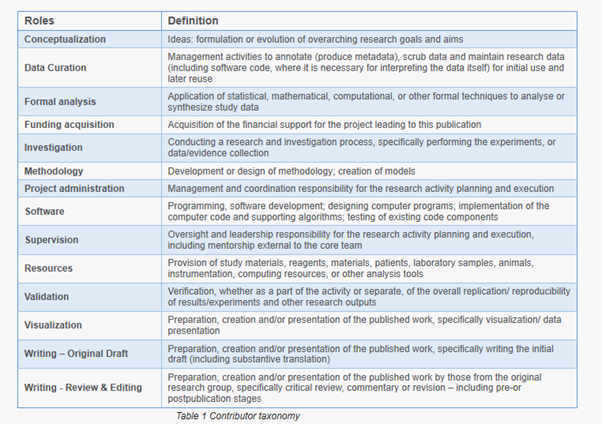CRediT and collaboration
Use CRedIT: a new international standard to visualize individual contributions for your publications
CRediT (Contributor Roles taxonomy) both is a new standard and a clever way to better indicate every research contribution and acknowledge them in research outputs. Instead of listing authors (in order of relevance) or mentioning them in the acknowledgement section, research contributions can be further specified in 14 roles identified in CRediT.
How can you use CRediT?
Next time you submit a research article or other research output, write an author or contributor statement by using the CRediT roles.
An author statement lists each author’s name and their contribution, using the 14 CRediT roles. In a contributor statement each type of contribution is specified, followed by the contributors’ names. It’s also an option to combine an author and contributor statement, see the examples below.
Add a CRediT statement or table to your next publication - find out more
CRediT will help you:
- Raise the profile of your team members and credit them for their work.
Recognition for the competencies of individual project team members - Showcase the interdisciplinary of your research and diverse expertise of your team more prominently.
Transparency – more insights into research activities and management - Help collaborators find you and expand your research network.
Visibility – highlight skills & expertise - Avoid authorship conflicts in your research group.
Shift the focus away from the order of authors to acknowledging the diversity of contribution.
Questions? Email publishing-lib@tudelft.nl
CRediT is used by TU Delft OPEN Publishing and many publishers.



